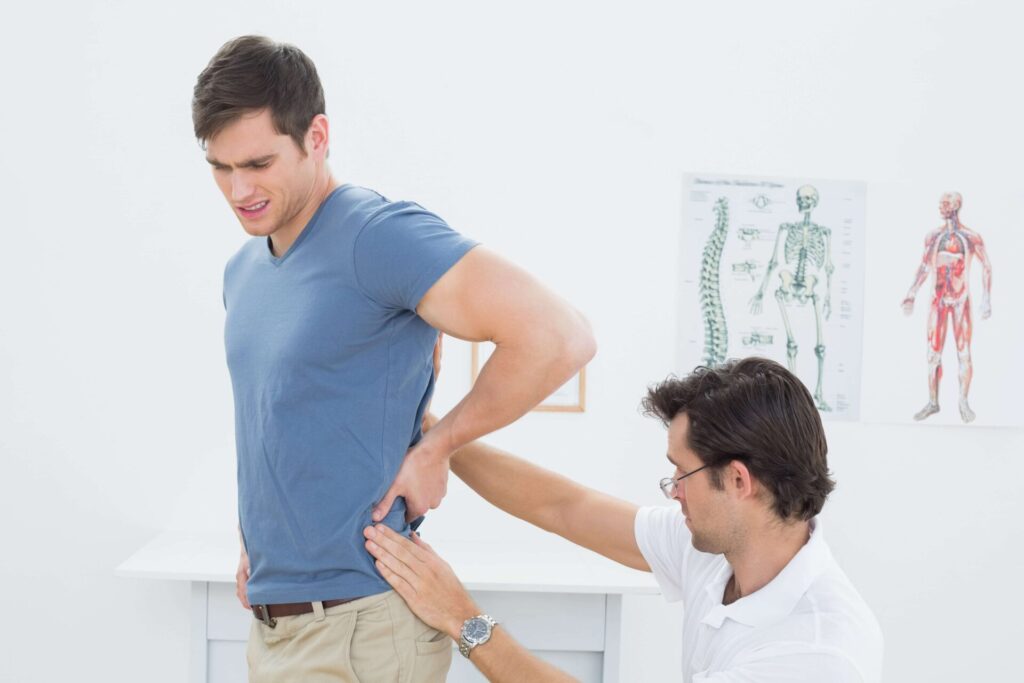Understanding the Common Causes of Spinal Pain

Spinal pain, a prevalent and often debilitating issue, affects millions of individuals worldwide. Understanding the root causes of spinal pain is essential for effective management and prevention. In this article, we will delve into the most common culprits behind spinal discomfort, shedding light on the factors that can leave you seeking relief. If you’re dealing with spinal pain or simply interested in safeguarding your spine’s health, read on to discover the insights you need.
- Poor Posture
One of the primary factors contributing to spinal pain is poor posture. In today’s digital age, with hours spent hunched over smartphones and computers, our spines endure an incredible amount of strain. Over time, this can lead to chronic discomfort, particularly in the neck, upper back, and lower back regions. Maintaining good posture and incorporating ergonomic changes in your workspace can significantly mitigate this issue.
- Muscle Strain
Muscle strain can also be a common source of spinal pain. Overexertion, lifting heavy objects incorrectly, or engaging in activities without proper warm-up can result in strained muscles around the spine. This type of pain is often localized and can be acute or chronic. Avoiding overexertion and maintaining a regular stretching routine can help prevent muscle strain.
- Herniated Discs
Herniated discs, sometimes referred to as slipped or ruptured discs, are another prevalent cause of spinal pain. These occur when the soft inner core of a spinal disc pushes through the outer layer, pressing on nearby nerves. This condition can lead to sharp, shooting pains and even numbness in the limbs. It often requires medical evaluation and treatment, such as physical therapy or surgery, depending on the severity.
- Arthritis
Arthritis, a joint disease, can impact the spine, causing pain and reduced mobility. Osteoarthritis and rheumatoid arthritis are the two most common types affecting the spine. These conditions can lead to joint inflammation, cartilage degeneration, and the formation of bone spurs. While there is no cure for arthritis, various treatments, including medication, exercise, and lifestyle changes, can help manage the pain and maintain joint function.
- Sciatica
Sciatica refers to pain that radiates along the path of the sciatic nerve, which runs from the lower back through the buttocks and down each leg. It is often caused by compression or irritation of the nerve, commonly due to a herniated disc or bone spur. Sciatica can lead to sharp, shooting pain and tingling sensations. Treatment options may include physical therapy, medication, and in some cases, surgery.
- Spinal Stenosis
Spinal stenosis is a condition characterized by the narrowing of the spinal canal, which can put pressure on the spinal cord and nerves. This narrowing can result from aging, bone spurs, or herniated discs. Symptoms often include back pain, numbness, and weakness in the limbs. Treatment may involve medication, physical therapy, or surgery, depending on the severity of the condition.
Conclusion
Spinal pain can have a significant impact on one’s quality of life. Whether it’s poor posture, muscle strain, herniated discs, arthritis, sciatica, or spinal stenosis, understanding the underlying causes is crucial to finding effective relief and prevention strategies. Remember that seeking professional medical advice is essential if you experience persistent or severe spinal pain. By taking steps to maintain a healthy spine and addressing potential issues early, you can minimize the impact of spinal pain on your life.
For more information on spinal health and expert advice, consult Dr. Jeremy Smith MD, a renowned specialist in the field.

